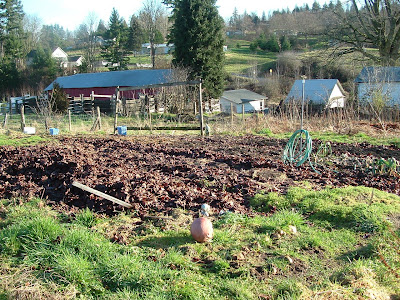
Mix together:
1 1/2 lbs. each ground pork and minced shrimp meat
1 finely minced lemongrass stalk
3 T. minced cilantro
4 garlic cloves, pressed
3-4 T. fish sauce
3/4 c. finely crushed saltine crackers
Mix well and form into 1 inch sized meatballs. Chill at least one hour before cooking, or freeze for later. I used about 2/3 of these meatballs to make the spring rolls here, and I froze the rest. While the meatballs chill, make the dipping sauce and prepare all the components for making the rolls.

Spicy Dipping Sauce
Mix in a wide mouth pint jar with a tight fitting lid:
1 c. water
juice of 2 limes
1/2 c. fish sauce
1 T. sugar
3 pressed garlic cloves
1/2 T. crushed red peppers
Shake to dissolve sugar and mix. Store refrigerated.
I cooked the meatballs in two batches in a large caste iron skillet then transferred them to a bowl. Lay out all the components for making the rolls: meatballs, fresh red leaf lettuce, fresh cilantro, cooked fine rice vermicelli (cook in boiling water 5 minutes or so, drain, rinse in cold water, and drain again), pie dish of warm water for softening rice sheet wrappers, rice sheets, and a platter for the finished rolls.

Making attractive spring rolls takes a bit of practice. Even if the first few attempts look rather sad, they can be either wadded together, or completely deconstructed, and they will taste just as delicious as a more artistic roll. These are rather fun to make and are really not that difficult to get the hang of making. This is how I do it: Soak a rice sheet for a few minutes in warm (not hot) water until pliable. Place on a flat surface. On it, place a torn bit of lettuce leaf (remove and discard the ribs) in the center or slightly off to one side, top it with two meatballs, a tiny mound of vermicelli (1-2 T.), and several cilantro leaves. Fold the shortest end over to cover fillings, then fold first one side and then the other over that, and finally roll the package towards the far end, securely but not too overly tight. I soaked one sheet while I was constructing and rolling another, which seemed about the right amount of time to soften it without it disintegrating.

Making attractive spring rolls takes a bit of practice. Even if the first few attempts look rather sad, they can be either wadded together, or completely deconstructed, and they will taste just as delicious as a more artistic roll. These are rather fun to make and are really not that difficult to get the hang of making. This is how I do it: Soak a rice sheet for a few minutes in warm (not hot) water until pliable. Place on a flat surface. On it, place a torn bit of lettuce leaf (remove and discard the ribs) in the center or slightly off to one side, top it with two meatballs, a tiny mound of vermicelli (1-2 T.), and several cilantro leaves. Fold the shortest end over to cover fillings, then fold first one side and then the other over that, and finally roll the package towards the far end, securely but not too overly tight. I soaked one sheet while I was constructing and rolling another, which seemed about the right amount of time to soften it without it disintegrating.

I thought a platter of these would be enough to eat for dinner while watching the Academy Awards last night, but there was some quiet grumblings of discontent among the ranks, so we made a pot of rice and some stir-fried cabbage with a bit of sesame oil to go with. I'm glad we did, the rolls all quickly disappeared, and the simple cabbage and rice was perfect alongside. Even if not very photogenic, it was really delicious.

















































